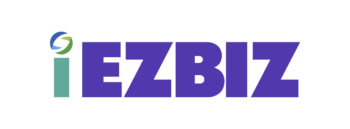Accessibility in the digital age is more than a feature – it is a need. From business reports to educational material and governmental forms, PDFs flourish. Without accessibility features, however, these papers might pose significant challenges for disabled users. This is where a creative pdf accessibility tool comes in, so changing how we distribute information and guaranteeing everyone equal access.
Why PDF Accessibility Matters?
Though they are a common document format, PDFs are not usually created with accessibility in purpose. Content that is not correctly tagged or formatted might pose challenges for persons who depend on screen readers, keyboard navigation, or other assistive technology. For companies and enterprises, this is not only a matter of usability; it also might be a legal one. Compliance with laws including the Americans with Disabilities Act (ADA) and Section 508 in the U.S., as well as worldwide norms like WCAG (Web Content Accessibility Guidelines) depends on the accessibility of PDFs.
The emergence of PDF Accessibility Tools has fundamentally streamlined the path toward document compliance. Many of the arduous lifting is automated by these systems, therefore lowering human mistakes and saving significant hours of effort. Rather than fixing PDFs one at a time, teams may now batch-process files, check for compliance problems, and implement large-scale repairs. In a related initiative, software development firm EqualWeb, which specializes on digital inclusion, has extended its services to tackle PDF access issues. The experts are using the AI technology to provide PDFs the same degree of usability and compliance—thereby bridging a major gap in the accessibility scene.
Revolutionary Elements of Contemporary PDF Access Solutions
Today’s PDF access tools transcend simple tagging. They seek to accelerate, increase accuracy, and reduce manual effort in the remediation process by smart automation, artificial intelligence, and intuitive user interfaces. These instruments can:
- Automatically identify and label tables, lists, and headings.
- Picture recognition and description using alt text.
- Set reading order to ensure logical flow.
- Confirm accessibility compliance in real time.
These features not only enable companies to fulfill legal requirements but also provide a more inclusive experience for consumers of all talents.
Improving Compliance and User Experience
An easy PDF enhances the experience for all, not only those with impairments. Well tagged papers, for instance, can be resized for mobile viewing, searched more easily, and indexed by search engines. Accessibility devices also aid localization and translating, therefore simplifying world communication.
Furthermore, by investing in accessibility, businesses show a real dedication to inclusiveness and lower their legal exposure. This strengthens customer loyalty as well as brand reputation—it’s a win-win scenario.
Future-Proofing Your Digital Content
The demand for accessible digital content will only rise as more online business, educational, and governmental services expand. By now embracing creative PDF access solutions, businesses can stay ahead of rules, prevent expensive legal battles, and—most importantly—guarantee they aren’t lagging behind.
Accessibility is a fundamental component of digital responsibility rather than a choice supplement; it’s thereby Welcoming tools and collaborators who further this objective—for example, PDF access software and professional providers helps to clear the path toward a more inclusive digital future.


